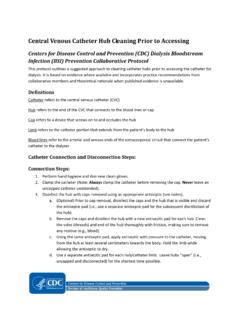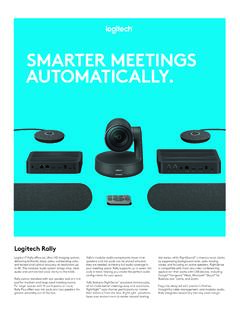Transcription of kart chassis setup and tuning manual
1 Copyright 2005 SSC Racing. All rights reserved. Introduction Setting up a race kart chassis seems to be as much art as science. Even major championship repeat winners often differ greatly with regard to set-up solutions. The manual is based on both the specific recommendations of the CRG Factory Race Team and the dominant, if not exclusive, opinions of kart racing champions. All recommendations come from reliable sources, but keep in mind that when making chassis /kart adjustments, If it doesn t get better going one way, try going the other . There are many paths to be taken on the road to good handling and maximum speed.
2 Finally, if you just want a very workable overview to get you on the track as soon as possible, look at the Basic chapters, including the Troubleshooting chart at the end of the book. Later, if you want more detail, go to the more advanced and theory sections and you will find much deeper explanations of what is really happening with virtually everything that affects the chassis performance of your kart. Copyright 2005 SSC Racing. All rights reserved. Basic chassis setup Base setup (Normal Track Conditions) The following settings are recommended as a starting point for a dry track with normal levels of grip (not green or slippery and also not with high amounts of rubber on the track, causing high grip).
3 Weight distribution should be front, 57% rear and 50/50% side to side. Front toe should be set out to 1/16 to 1/8 (1-3mm). For hard compound tires, set toe out at 1/8 to (3-6mm). Caster/Camber adjusters at front spindles should be set at II top & II bottom. More caster may be needed over the weekend to fight tire wear and/or loss of grip. Front bumper should always be tight. Front width should be 45-1/2 to 46 . Side pod bars need to be loose, but with bolts tight. Seat should be at standard mounting points. Rear wheel hubs should be medium length. Rear ride height should be as low as possible.
4 Rear track should be set just below the legal limit, within the rules (55 for many classes, 50 for junior classes. A good starting point would be 54-3/4 for most applications. Axle should be the medium stiffness. Seat struts should be in place. Torsion bar should be in horizontal position. Rear bumper should be tightened. Tire Pressures Hard compound tires (cold) 12-13 psi Medium compound tires (cold) 9-10 psi Soft compound tires (cold) 8-9 psi Copyright 2005 SSC Racing. All rights reserved. Basic chassis tuning If front end of kart is not gripping in corners (understeering): Move out one wheel spacer on both spindles.)
5 If front of kart becomes too wide, move wheels back to original spacing and change caster/camber adjusters from II/II to II/III or III/III (be sure to re-check toe settings). Fit shorter hubs to rear axle. Be sure to measure from the hub face that meets the wheel to the chassis first (typically around 8-3/4 ), so you can keep the same rear width measurement. Raise the hot rear tire pressures .5 to 1 psi. Remove seat struts, if fitted. Use a softer rear axle. If back end is sliding (loose) at entrance of the corner or there is too much front bite: Move in one wheel spacer on both spindles.
6 Lower .5 to 1 psi in the rear tires. Move weight away from the front of the kart. Lower the front of the chassis (be sure to re-check toe settings). Put less caster in. Adjusters at I/II or I/I (be sure to re-check toe settings). Tighten the front bumper, if not already tight. Check to make sure your toe is set properly. on each side, while the kart is on a stand (slightly more for heavier drivers). Fit a stiffer axle. Fit longer rear hubs . Be sure to measure from the hub face that meets the wheel to the chassis first (typically around 8-3/4 ), so you can keep the same rear width measurement.
7 Fit seat struts (maximum of 4 total). Tighten rear bumper if not already tight. Raise rear ride height. The kart is hopping in the corners: Set the rear track as close to the legal limit, if not already there. Fit shorter wheel hubs on the axle. Be sure to measure from the hub face that meets the wheel to the chassis first (maximum legal width will be around 8-7/8 at the hub face), so you can keep the same rear width measurement. Raise the air pressure in the rear tires by .5 to 1 psi. Lower any ballast to a lower vertical position (especially in the rear of the kart).
8 This includes the driver. In some very high grip situations, moving the seat forward, then angling the rear of the seat down will greatly lower the kart s center of gravity (cg). Lower the rear ride height to the maximum, if not already done. Change to a softer axle. Remove seat struts. Copyright 2005 SSC Racing. All rights reserved. Advanced Techniques and Theory General Theory To enable us to properly set up a kart chassis , we must first understand the most basic principals of the racing kart, which is a unit made up of tubes and front steering geometry, propelled through a live axle (one without a differential).
9 Making adjustments to enable the race kart to turn without oversteer or understeer is difficult and challenging. Achieving a well-balanced chassis set up is part art and part science. Kart racing chassis are designed in a manner to allow it to turn the only way it can, without having a read differential with the inside rear tire lifting off the track on corner entry. The outer rear tire drives around the outer front tire, allowing the chassis to efficiently turn into the corner because the rear tire is off the track surface. If the inner tire does not lift, no matter how much you turn the steering wheel, the front of the chassis wants to keep going straight, creating an understeer or push condition.
10 Note: If the driver is not changing the direction of the kart properly, it is possible he/she is making a well-tuned kart behave badly. While this guide does not delve into driving techniques, here s something to make sure you are on the right track: Observe where the proper apex (clipping point) is for each turn on the track. When you re driving, each time you pass an apex in a corner, you should be starting to smoothly move the steering wheel back to the center. If you do it properly, you will not have to hold the steering on, past the apex of the corner. If you follow this technique and run out of usable track at the exit of the corner, you may have turned-in too shallow at entry or your apex was too late.







